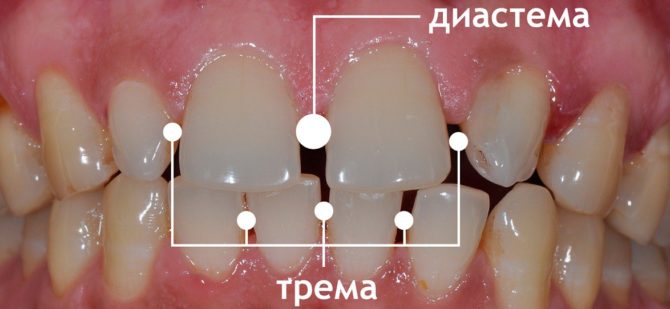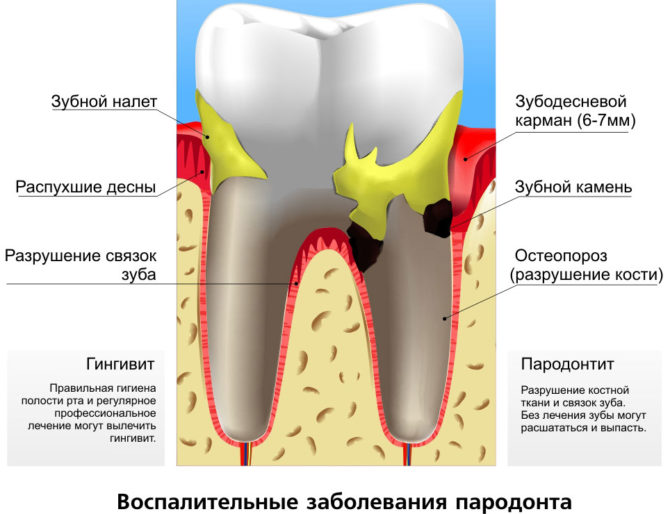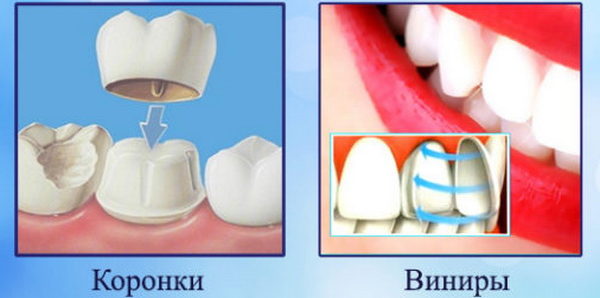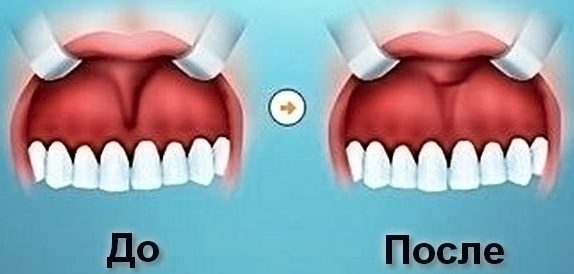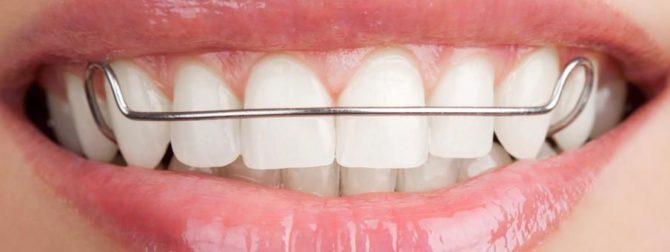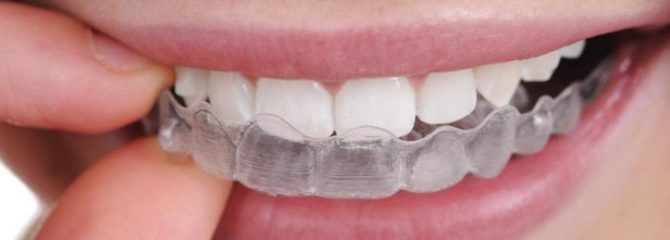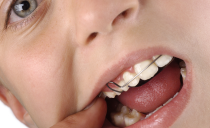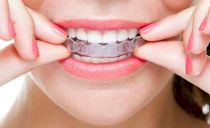Gaps between the teeth: why they appear and how to remove
Small gaps between the teeth are a cosmetic defect and do not cause much harm to health. But if the distance between the teeth is too large, a person may have problems with diction and gums. In this case, the gap between the front teeth should be removed.
Content
Types of gaps between the teeth
In dentistry the gap between the front incisors is called diastema, between the other teeth - three. Such a pathology occurs in almost 20% of the population.
From the Greek diastema it is translated as “interval”, and trema - as “hole”. The defect can be noticed even during the formation of a milk bite in a child.
Types of gaps between the front teeth
The gaps between the central incisors are of two types:
- false
- true.
False diastema manifests itself at the stage of development of primary teeth and passes independently after lateral incisors are cut, “pushing” the central ones to the desired position. The formation of true pathology begins at the end of teething.
Only a dentist can decide how to remove a hole between your teeth. Without his intervention, getting rid of the gap is impossible.
Diastems are classified according to the shape of the arrangement. The following options are possible:
- deviation of both roots and crowns;
- displacement of only one of the teeth;
- the normal location of the roots, the inclination of the crowns;
- complete displacement of crowns;
- mirror extension of the central teeth.
In rare cases, a hole between the front teeth appears in adulthood, when a permanent bite is already fully formed.
Types of gaps between other teeth
Three types are distinguished: pathological and physiological. The first occur after completion of the formation of a permanent dentition. An incorrect bite, an abnormal jaw size can lead to their formation. This defect requires immediate correction.
Physiological tremors occur during the period when the milk teeth begin to be replaced by constant ones. At this time, there is an active growth of the jaw bones, which leads to the formation of interdental gaps. Such a defect is not a cause for concern, over time, the clicks will decrease by themselves.
Causes of interdental fissures
Various factors can cause crevices between the teeth. These include:
- Children's habits. If the baby cannot refuse the nipple for a long time, this can adversely affect the formation of the bite. The nipple touches the front teeth, as a result of which a crack appears between them.
- Prematurely removed or lost tooth. Premature loss or removal of dental units leads to the fact that the remaining teeth are trying to fill the empty space, because of which there are gaps, gaps.
- Small size of front incisors. Small teeth cannot fill all the space intended for them in the jaw row and limit the position of other dental units.
- Individual characteristics. Some people have congenital problems with the formation of the dentition.
- An improperly formed bridle. The bridle is located on the inside of the lip and is attached to the gum. If the bridle is too large, then the crowns of the front teeth cannot close, the distance between them is called a diastema.
- Violation of the swallowing reflex. During swallowing, the tongue should rest against the sky, but in some people it rests on the front teeth, which contributes to the formation of a crack between the teeth.
The appearance of interdental lye in adults with a fully formed dentition can provoke periodontal disease. With such pathologies, the gums become loose, and the bone tissue weakens. As a result, the teeth begin to shift in different directions, which provokes the formation of crevices between them.
Possible complications
A small interdental fissure does not cause discomfort and can be perceived as a kind of highlight of appearance. If the diastema does not cause problems, it is not necessary to get rid of it. An exact conclusion about whether to eliminate the interdental gap can be given by an orthodontist dentist.
The huge distance between the teeth can provoke numerous periodontal diseases and lead to the development of speech defects. During chewing, the portion of the gum between the problem teeth is often injured by solid food. Permanent injury is fraught with the formation of periodontal pockets. Particles of food accumulate in them, in which microbes actively multiply. The result is an inflammatory process and bad breath, which gives a person even more discomfort than the gap itself.
Doctors note that patients with malocclusion often develop caries and tartar appears. Hardened deposits must be removed, and it is recommended to do this every 6–8 months. In addition, the curvature of the dentition always leads to an incorrect distribution of the masticatory load, which causes the development of periodontitis and other complications, including pathological tooth mobility and possible exposure of its root.
Improper tooth positioning often leads to problems with the temporomandibular joint. With TMJ dysfunction, intense pain occurs during opening of the mouth. An additional consequence of the disease is a large gap between the front teeth.
How to remove the gap between the teeth
The treatment methods for diastemas and three depend on the patient's age, the size of the interdental clefts, and the general condition of the teeth and gums. Such methods of correction of the dentition are used:
- orthopedic therapy;
- prosthetics;
- surgical intervention;
- art restoration.
What to do if large gaps have formed between the teeth, the dentist decides. The patient can only choose the optimal correction method from those proposed by the doctor.
Restoration
If the distance between the teeth is small, you can limit yourself to artistic restoration. This is not a cure, but a way to mask a cosmetic defect. The pluses of this correction method include painlessness and simplicity of the procedure, but it is suitable only for adult patients who have already formed a bite.
Before an artistic restoration, the doctor should examine the problematic teeth. In the presence of caries, periodontal disease or problems with enamel, preliminary treatment will be required. If there are no contraindications for restoration, the doctor selects the optimal material, the color of which does not differ from the natural color of the patient's enamel, and proceeds to the procedure.
The crown of the restored tooth is stratified in layers by applying plastic photopolymer materials, each layer is dried and polished. Then a septum separates the teeth. You can remove the gaps between the teeth with this method in one visit to the dentist.
Veneers and crowns
You can mask the hole between the teeth using special pads. The most budget option is ceramic crowns. They are made according to an individual cast of the jaw of a particular patient.
Materials for the manufacture of crowns are strong, durable and do not require special care.But this method of correction of diastems and three, there are a number of disadvantages. In order for the material to fit snugly against the tooth, it is necessary to grind its crown part, which increases the risk of damage to the dental unit and the development of caries. In addition, crowns can injure the gums during chewing, which is fraught with the periodic development of the inflammatory process.
A less traumatic but more expensive way to eliminate the gaps between the teeth is to install veneers. Veneers are thin plates made of composite material or high strength ceramics. The thickness of each pad is less than 0.7 mm. Using a special composition, they are glued to the cleaned and dried teeth surface.
Surgery
You can get rid of the diastema, which was formed due to a large frenulum of the upper or lower lip, by means of a simple surgical operation. The procedure is performed under local anesthesia. During the operation, the frenum is excised with a laser or scalpel and sutured.
The recovery period of the operated soft tissues takes several days. It will take some time for the teeth to return to the correct position, so the problem will not be completely eliminated right away.
Orthodontic constructions
Eliminate diastema and tremas between the deciduous teeth, formed due to malocclusion, help orthodontic plates. They are made according to an individual impression and are plastic structures with metal hooks and arches. If a small correction of the dentition is required, removable plates can be installed - they should be worn only in the daytime.
Both children and adults can correct the bite with cap. They are a kind of "cases" of soft transparent material that can be worn at any convenient time. If necessary, the structure is easily removed.
Mouthguards are recommended if you need to remove a small diastema between the front teeth.
Braces help to fix a noticeable hole between the teeth. The bracket system is a lock that is attached to the tooth surface using a special adhesive solution. A flexible metal arc is attached to these grooves, which puts pressure on the teeth, forcing them to move in the right direction.
With the help of braces, even a large gap between the front teeth can be fixed. Correction can last from several months to two years, depending on the complexity of the defect. Periodically, it is necessary to visit a dentist who will tighten the arch to adjust the pressure on the dentition.
Is it possible to fix the gap between the teeth at home
Some people are sure that you can get rid of the gap between the teeth at home, without a visit to the dentist and the use of orthodontic designs. The effectiveness of home straightening methods is controversial, but the patient must decide whether to do such “procedures”.
To fix a hole between the teeth at home, you can make a similarity to the orthodontic design using a conventional sewing thread. The cutters are tied and tightened by it, near which there are gaps.
Correcting the diastema in this way will take a long time - at least a year. The process will be accompanied by unpleasant sensations, in addition, the risk of spoiling the bite will increase - therefore, resorting to home methods for correcting the dentition is not only undesirable, but also extremely dangerous.


